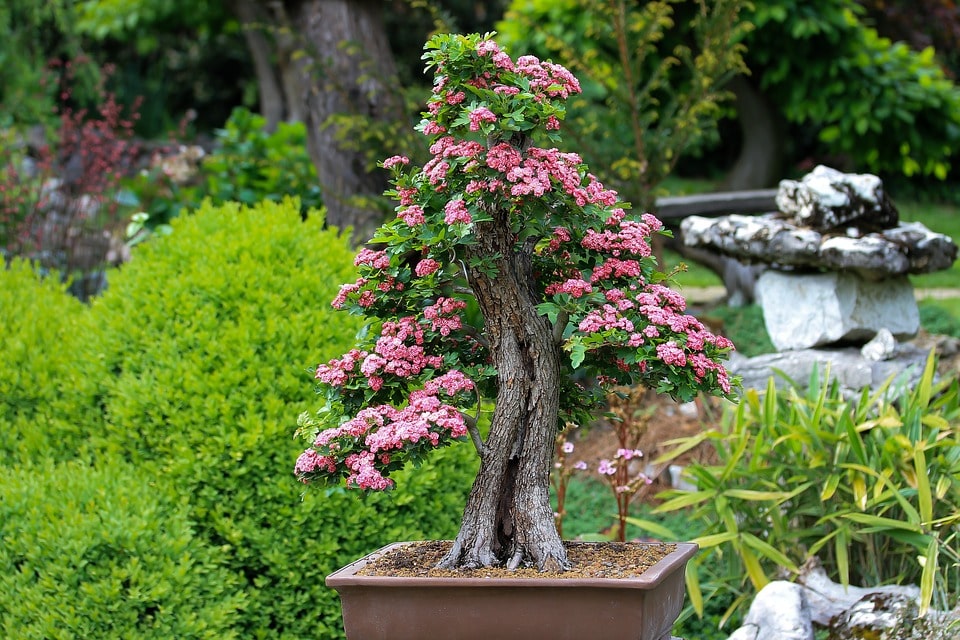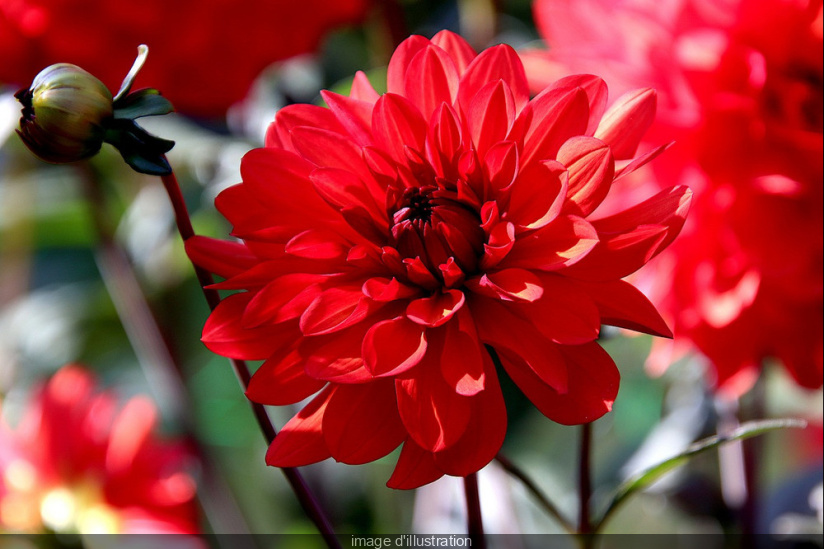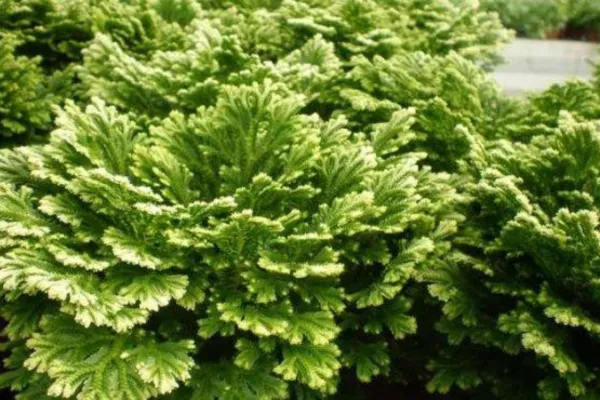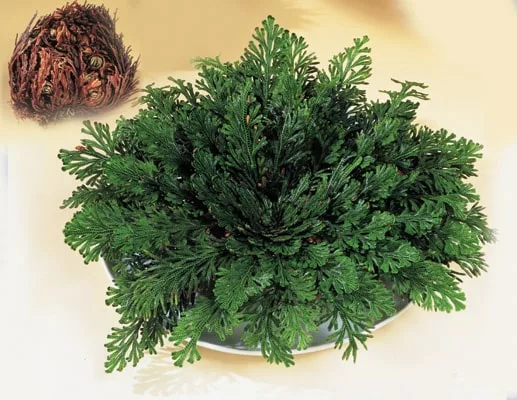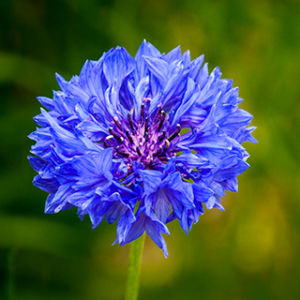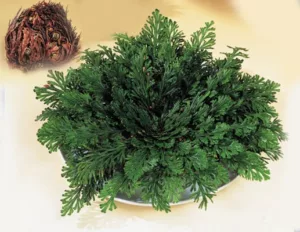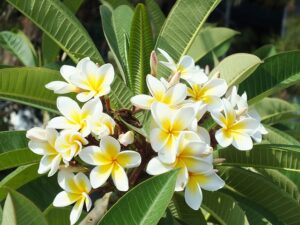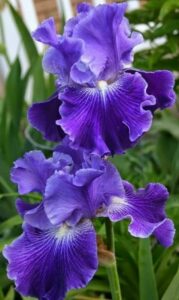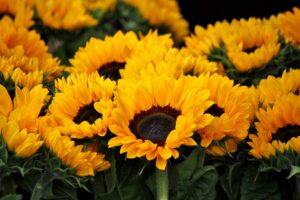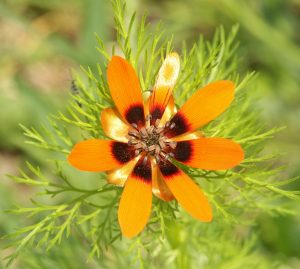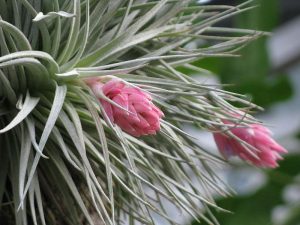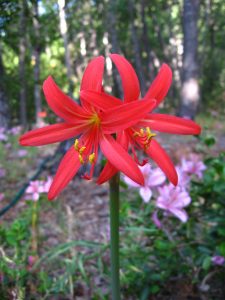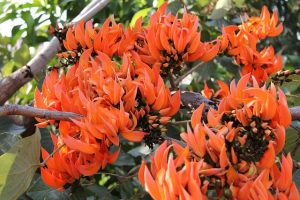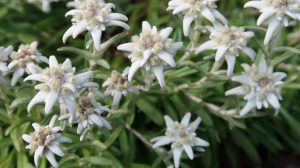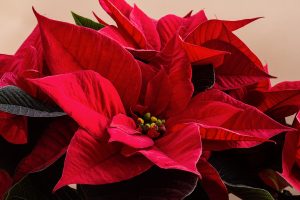The bonsai: their origin, types, care and meaning
Hello friends. Today’s article is a little different, because it is not dedicated to a flower, but to a special way of growing trees, it is about Bonsai.
Bonsai
Origin and history
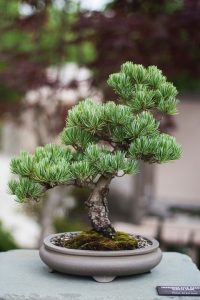
Bonsai is a word of Japanese origin that literally means bon = ‘tray’ + sai = ‘nature’ (although etymologically it comes from the Chinese term penzai, meaning pén = ‘tray’ + zāi = ‘cultivate‘).
The art of bonsai originated in China about two thousand years ago, as an object of worship for Taoist monks. They started creating miniature landscapes; the smaller the representation, the more magically they thought it was. They saw the bonsai as a symbol of eternity, and as a tree that represented the union between the divine and the human, the earth and the sky.
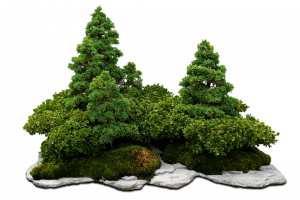
During the Kamakura period (780 years ago) the Japanese copied this art. Since then a different style emerged, as they began to cultivate individual trees instead of representing landscapes. These trees are what we know today as Bonsai. Years later bonsai came to be seen as a design issue, the approach that related it to an artistic or artisan activity replaced the religious approach or the mythical tradition.
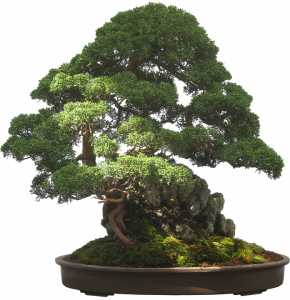
Over the years, the Chinese and Japanese who traveled to other countries were propagating the art of bonsai. However, these trees were officially shown to the Western public at the Universal Exposition in Philadelphia in 1876, in Paris in 1878 and 1889, at the Chicago Expo in 1893, at the St. Louis World Fair in 1904, at the Exhibition of Japan-Great Britain of 1910 and in the Exhibition of San Francisco of 1915.
In 1923, after the Kanto earthquake that devastated the Tokyo area, a group of families settled about 30 km from Omiya, where they founded the Bonsai Omiya Village, the center of Japanese Bonsai culture.
With the advancement of technology and the emergence of the Internet, information about bonsai was disseminated. In 1992, news about the subject was published and three years later they published the first bonsai portal.
How does a bonsai
Aldea Bonsái Omiya
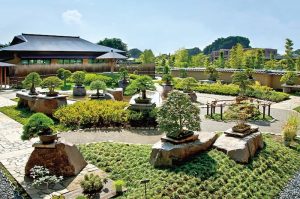
A bonsai is not a genetically modified plant. They are trees that remain small giving it shape, through the cuts made in branches and roots every certain time, depending on the species.
Choose tree:
It is possible to create a bonsai from any tree that produces green branches and make it stay with reduced dimensions by confinement in pot and pruning of its frond and roots. However, there are some that are more difficult to do because of their characteristics.
For that reason I do not recommend that you choose trees with these characteristics to make your bonsai:
- large leaves (such as those of the Horse Chestnut (Aesculus hippocastanum) or those of some Ficus such as (Ficus elastica)
- Excessively fast growth (like the one in the Albizia procera)
- life expectancy of two to four decades (such as Leucaena leucocephala)
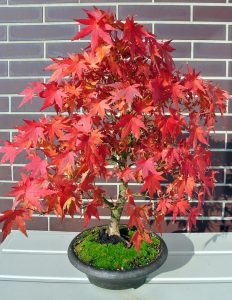
On the contrary, you can choose any type of maple (Acer palmatum, Acer ginnala, Acer pseudoplatanus, etc.), small leaf Ficus (such as Ficus retusa or Ficus benjamina), Olmos, Liquidambar, Serissa phoetida, Shrubs or Cornus .
Shrubs are a good option to use as Bonsai, since most have small leaves, and a very controllable growth. Without forgetting that many of them have very ornamental leaves and / or flowers. Some of the most used are: Japanese quince (Chaenomeles japonica), Camellia, Berberis, Buxus, Forsythia, Coniferous and Pinus.
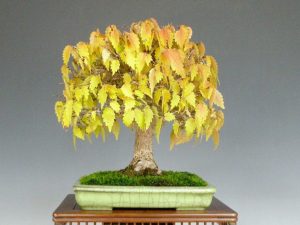
Characteristics of the land:
To select the land we must take into account the needs of the bonsai we are going to plant. If more drainage is needed, a coarse grain should be used, otherwise the size should be reduced. Bonsai land should never be dry.
Fertilizer for bonsai
Fertilizer:
As a consequence of the bonsai being in a pot with limited nutrients, it must be paid to satisfy the needs of the plant. This should be done at the beginning of spring and in autumn.
Transplant:
During the first year of life, bonsai should not be transplanted. The most recommendable stage is in the spring. Each time the transplant is done, the roots must be pruned and the substrate renewed.
Pruning:
Pruning bonsai is essential to shape it. It must be done when the tree has lost its leaves and before the new outbreak of them. The cut should be made with an inclination of 45 ° and upwards, in order to facilitate the healing of it.
Wiring:
This technique allows to distribute the vigor of the tree without the need to prune the bonsai, increasing its illumination and designing its appearance. As the nickname should be done when the plant does not have leaves.
Tools kit
Pinched:
In order that the flowers and leaves of the bonsai respect the scale of the trunk, they should be left in the sun, and using the pruning and pinching each time they will grow smaller and proportionate.
Create the bonsai
After selecting the tree and the design to be made, you must remove all the dead branches. Then choose the branches that you must eliminate according to the selected design.
For pruning you should take into account:
- If you have several branches at the same height of the tree, leave only one.
- Eliminate thick branches that grow vertical and are difficult to bend.
- Also cut the branches with curves and those that hide the front part of the trunk.
After making the cuts it is recommended to apply sealant paste on the wounds of the plant to protect the tree from infections and help it heal faster.
Classification of bonsai according to size
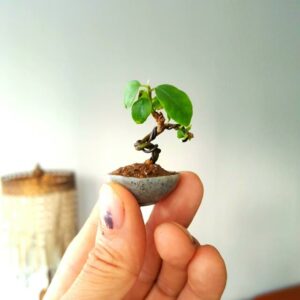
Shito or Keshitsubu:
They are the smallest bonsai, it is bonsai up to about 5 centimeters. In general, this bonsai was created by directly sowing a seed in a tiny pot, resulting in a bonsai that can be transported on the tip of a finger. They are very scarce and difficult to care for.
Mame:
Groups the trees with heights between 5 and 15 cm.
Komono o Kotate Mochi:
between 15 and 31 centimeters.
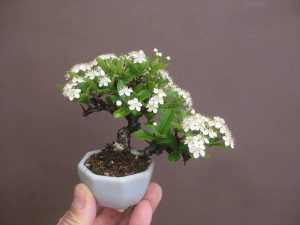
Shohin:
The Japanese term Shohin means “something small”, so in this classification we have the small bonsai. Shohin size is considered as trees less than 25cm high.
Chumono:
The height of these bonsai is between 30 and 60 centimeters. They are easier to care for and due to the size of the pot they do not require watering so often.
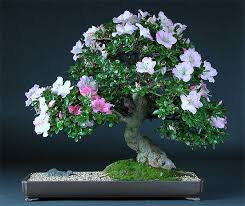
Omono:
These bonsai measure between 60 and 120 centimeters, also considered as “large bonsai” and may need 2, 3 or more people for their transport in the case of the largest.
Hachi-Huye:
They are the largest bonsai, called the “giant bonsai”. They are all trees that measure more than 130cm. They are really big, more like a tree modeled like bonsai. They are difficult to find due to their complex transfer and handling.
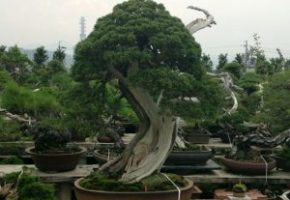
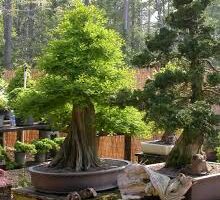
Types of bonsai according to their shape
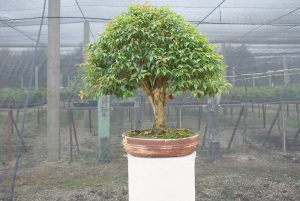
Bonsai style broom (Hokidachi):
This broom style is preferably used for leafy deciduous trees with thin branches. The trunk is straight and does not reach the apex; the branch begins at a third of the height towards all the directions, forming a cup in the form of a ball.
Bonsai formal vertical style (Chokkan):
This style is very common, and is also often found in nature. The straight trunk should clearly show a conicity, as the lower part has to be thicker than the upper part. The first branches grow to a quarter of the height of the trunk. A branch forms the apex; therefore, the trunk is not the highest point of the tree.
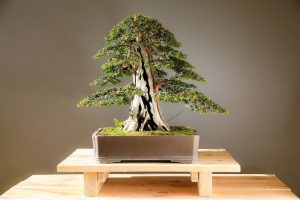
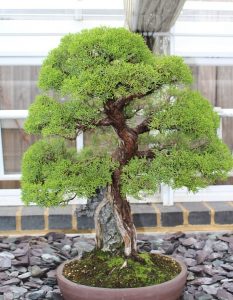
Bonsai informal vertical style (Moyogi):
The informal vertical style is very common, both in Bonsai and in nature. The trunk snakes upwards and a branch grows from each curve. The trunk has to visibly show a conicity.
Bonsai inclined style (Shakan):
In this inclined Bonsai style, the tree has to grow at an angle of 60º-80º from the ground. The roots on one side are well developed and thus keep the tree standing. On the side where the tree is tilted, the roots are clearly less developed.
The first branch grows in the opposite direction to the inclination of the tree to maintain balance. The trunk can be straight or a little inclined, but it has to show conicity, thick at the base and it should lose weight until it reaches the apex.
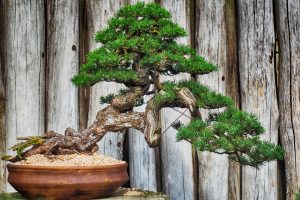
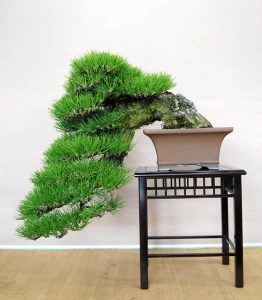
Waterfall style bonsai (Kengai):
This Bonsai style is planted in tall pots. The trunk ascends a short distance and then bends over itself in the opposite direction. The apex usually grows above the pot, but the alternate branches grow from a trunk that snakes down. To maintain balance, these branches have to grow horizontally to balance the tree.
Bonsai semi-waterfall style (Han-kengai):
In this style the trunk usually goes a little upwards and then bends down, but never falls below the pot. The apex grows above the pot, the other branches are lower.
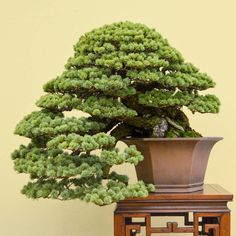
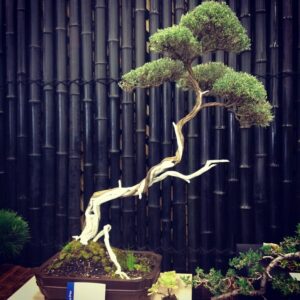
Bonsai literati style (Bunjin):
In nature this type of tree is found in places where the competition of other plants is so great that the only way to survive is to grow above all. To make the Bonsai Literati look even more resistant, the bark is removed from some dry branches (what is called Jin) or from a part of the trunk (what is called Shari). These trees are usually planted in tiny, round pots.
Bonsai style swept by the wind (Fukinagashi):
The Fukinagashi style is also a good example of trees that have to fight to survive. All the branches and the trunk grow in one direction, as if the wind blows and lashes the tree constantly to the side. The branches alternate to the left and to the right of the trunk, but in the end they all lean in one direction.
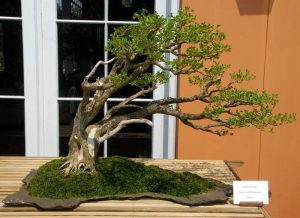
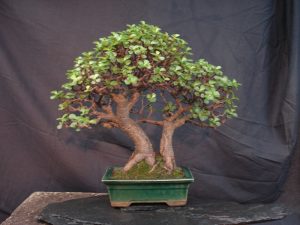
Bonsai style double trunk(Sokan):
The double trunk is a very common form in nature, but in Bonsais you do not see much. Normally two trunks of a single root system grow, but it is also possible that a smaller trunk emerges from the main trunk very close to the ground. The trunks differ greatly in thickness and altitude: the thickest and most developed trunk grows in an almost vertical direction, but the thinner trunk leans slightly outwards. The two trunks form a single tree crown.
Bonsai forest (Yose-ue):
The Yose-Ue style is much like the style of multiple trunks, but with one important difference: the forest consists of loose trees that form a group. The most developed trees are usually found at the midpoint of the pot, which is usually large and flat. The smaller trees are planted more to the sides so that a single cup of leaves forms.
You should avoid planting trees in a straight line, so the forest looks much more natural.
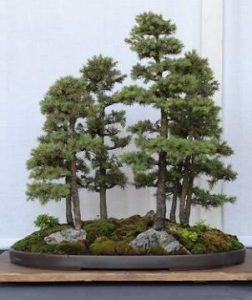
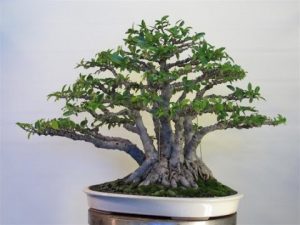
Bonsai style multiple trunks (Kabudachi):
The Kabudachi style is actually the same as the double trunk style, but with 3 trunks or more. The trunks all grow from a single root system, so it is a single tree. The trunks have a collective cup with a single apex that will be formed by the thickest and most developed trunk.
Bonsai style embraced by rock(Seki-joju):
In a rocky soil the roots of the trees are forced to look for the fertile earth that is in the holes and fissures. The roots are bare on the rocks, so they are covered with a bark similar to the trunk to protect them from the sun. As the roots that grow on the stone then sink into the soil of the pot, the care of this type of tree does not differ from that of other styles. Maple trees are often used for this style.
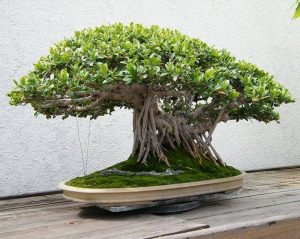
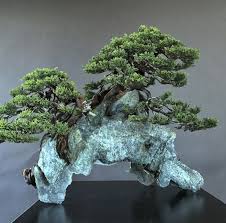
Bonsai style rooted in rock (Ishizuki):
In this style the trees grow inside the holes or fissures of a rock, which means that there is only a very small space where they can develop and absorb nutrients. For this reason, trees that grow inside a rock should not give the impression of being healthy plants that grow rapidly but on the contrary should give the impression that the tree struggles to survive.
Obviously you have to water and fertilize regularly since the storage capacity of water and nutrients in the soil and within the rock is very small. The rock inside of which Bonsai grows is usually placed in a flat pot containing water or gravel.
Balsa style bonsai (Ikadabuki):
Sometimes an old downed tree can survive by growing its upturned branches. For this to happen, the roots of the old tree must provide sufficient nutrients to these branches to carry out this effort. After a while, new roots grow from the lower part of the fallen trunk, assuming at the end the function of the original roots. The old branches that grew upwards are now becoming larger and thicker, transforming into trunks with multiple branches thanks to the flow of nutrients from the new roots. The new trunks end up forming a unique glass, just like in the Yose-ue style. However, in the balsa style he does see that the new trunks emerge from the original trunk.
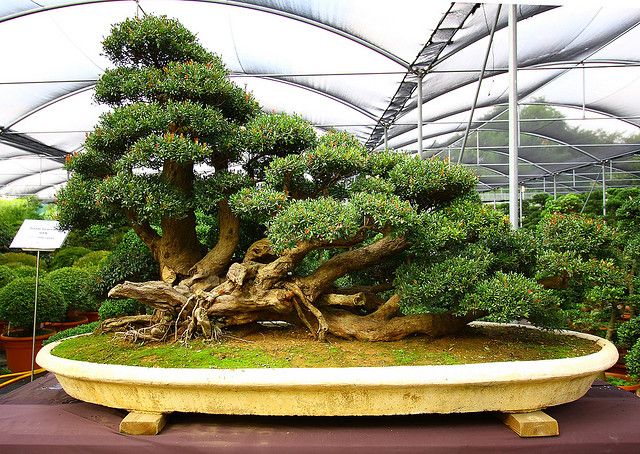
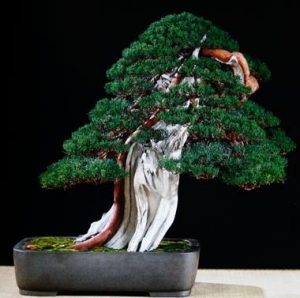
Bonsai style floating wood (Sharimiki):
Over time, in some trees areas of the trunk without bark arise due to inclement weather. These areas usually begin in the lower part of the trunk, close to the roots and ascend through it becoming increasingly thin. The intense sunlight comes to whiten those bare parts and give them a very characteristic aspect of this style. With respect to Bonsai, this process can be emulated by removing the bark from the trunk and treating with calcium polysulfide to whiten more quickly. This technique is called doing shari.
Significado de los Bonsáis
When we give a bonsai, we are wishing the person who receives it to achieve independence, majesty of spirit, good health, wisdom or dignity in old age. That is, we give him a desire for happiness, friendship, a long life and a quiet old age.
Then I leave some TOP bonsai.
Top of the 10 best bonsai: https://www.bonsaiempire.es/inspiracion/top-10/mejores-bonsais
Top of the 10 best bonsai in bloom: https://www.bonsaiempire.es/inspiracion/top-10/bonsais-de-flor
If you liked our article, like it and share it on social networks, your friends also want to know more about these tiny trees. Leave us your comments here.

Source of information:
https://www.bonsaiempire.es/
Share this content:
